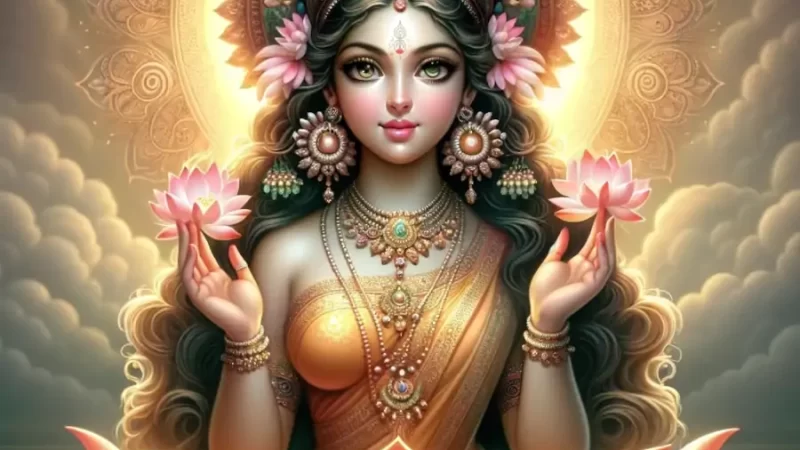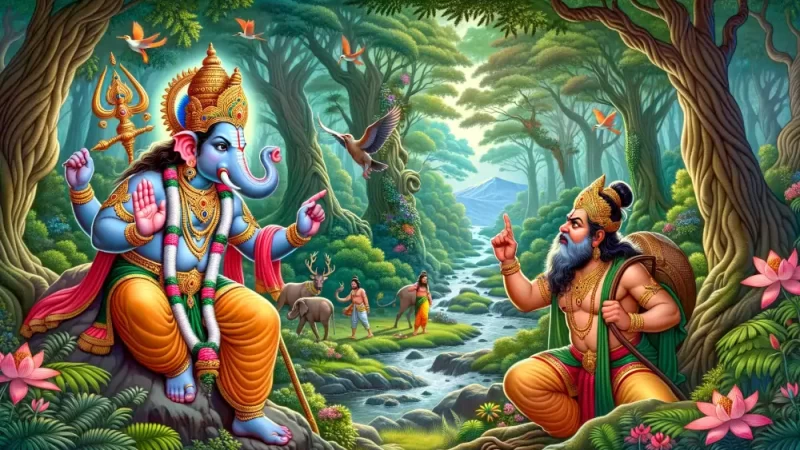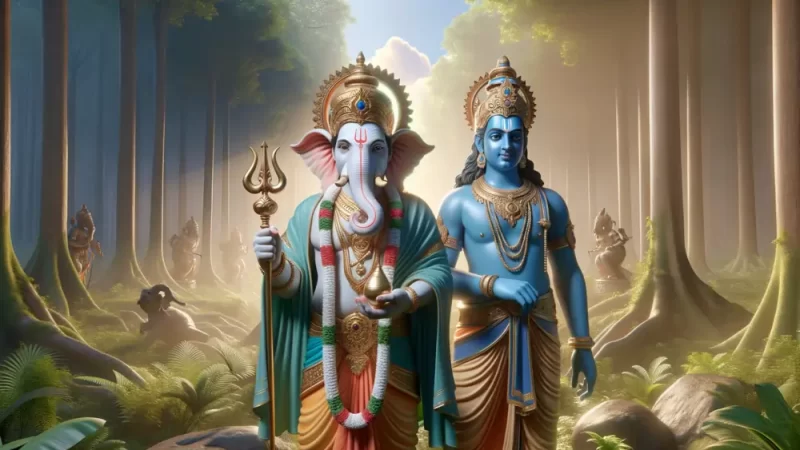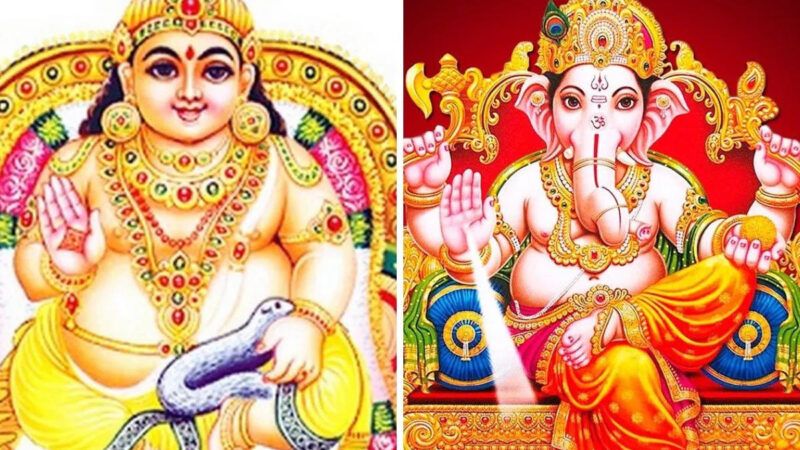Santoshi Mata: Daughter of Lord Ganesha
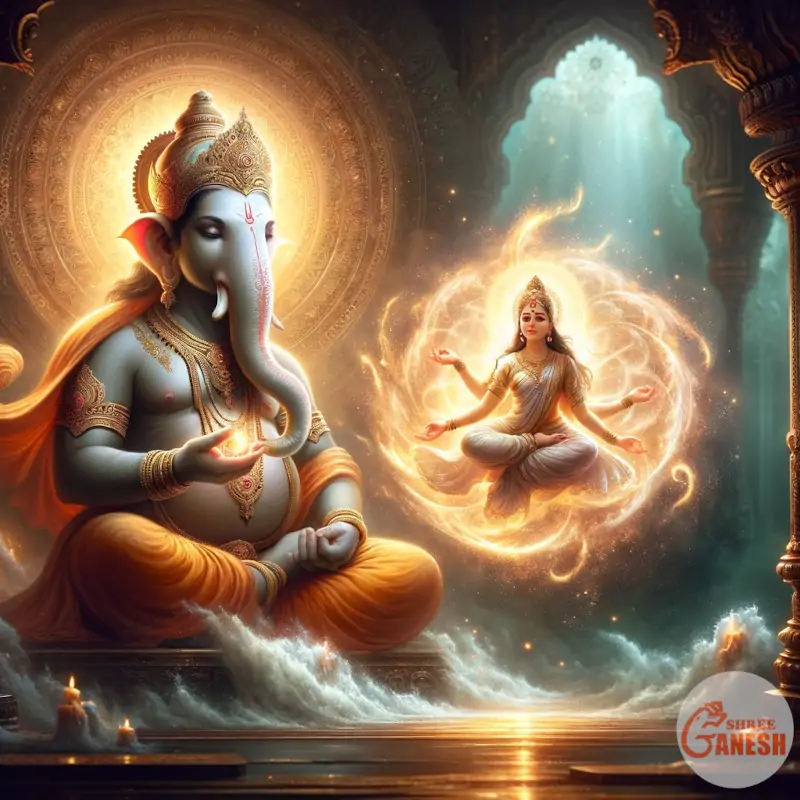
In the realm of Hindu mythology, there exists a divine tale of a goddess who embodies happiness and contentment, a goddess known as Santoshi Mata. Her origin is intertwined with the lineage of Lord Ganesha, the revered elephant-headed deity. This is the story of Santoshi Mata, the spiritual daughter of Lord Ganesha, who holds the power to fulfill the wishes of her devoted followers.
The Birth of Santoshi Mata
The story begins with Lord Ganesha, the son of Lord Shiva and Goddess Parvati. Ganesha, the remover of obstacles, is a beloved deity among Hindus. He had two wives, Riddhi and Siddhi, who symbolized wealth and success. From these two unions, Ganesha was blessed with two sons named Subha and Labha.
However, Ganesha’s family was incomplete, and his two sons yearned for a sister to complete their familial happiness. One day, they witnessed a ritual where Lord Ganesha had a sacred thread, known as Rakshasutra, tied to his sister Ashok Sundari. Intrigued by this ceremony, they questioned their father about its significance.
Lord Ganesha, with wisdom and love, explained that the Rakshasutra was not merely a thread but a symbol of protection and brotherly love. It was a powerful shield that safeguarded his sister from harm. Hearing this, Subha and Labha expressed their desire for a sister who would bring them joy and protection.
Touched by his sons’ longing for a sister, Lord Ganesha, who possessed extraordinary powers, decided to fulfill their wish. He channeled his divine energy and created a radiant flame, a manifestation of his own essence, and merged it with the divine energies of his wives, Riddhi and Siddhi. This celestial union gave rise to a beautiful and radiant girl, who would come to be known as Santoshi Mata.
Santoshi Mata was not an ordinary goddess; she was a symbol of pure blessings and contentment. Her birth was a testament to the profound love of a father for his sons, and it marked the beginning of her divine journey as the embodiment of happiness.
Santoshi Mata: The Spiritual Daughter of Lord Ganesha
Santoshi Mata, born out of love and devotion, holds a special place in Hindu mythology. She is considered the spiritual daughter of Lord Ganesha, and her worship is rooted in the quest for happiness, contentment, and the fulfillment of desires.
The word ‘Santosh’ itself carries profound meaning—it signifies happiness, and Santoshi Mata is the bringer of satisfaction and joy. She is depicted as a beautiful goddess, seated gracefully on a blooming lotus. The lotuses around her are filled with milk, symbolizing her purity and virtue.
Santoshi Mata possesses four hands, each holding significant symbols. In three of her hands, she carries a trident, a sword, and a bowl of sugar. These represent her power to protect her devotees from evil forces and offer them the sweetness of life. In her principal right hand, she extends the Abhaya mudra, a gesture of reassurance and protection.
It is believed that the weapons she holds are intended solely for combating malevolent energies, while her upper hands remain concealed, reserved for her beloved devotees. This portrayal underscores her benevolence and her unwavering commitment to safeguarding the well-being of those who seek her blessings.
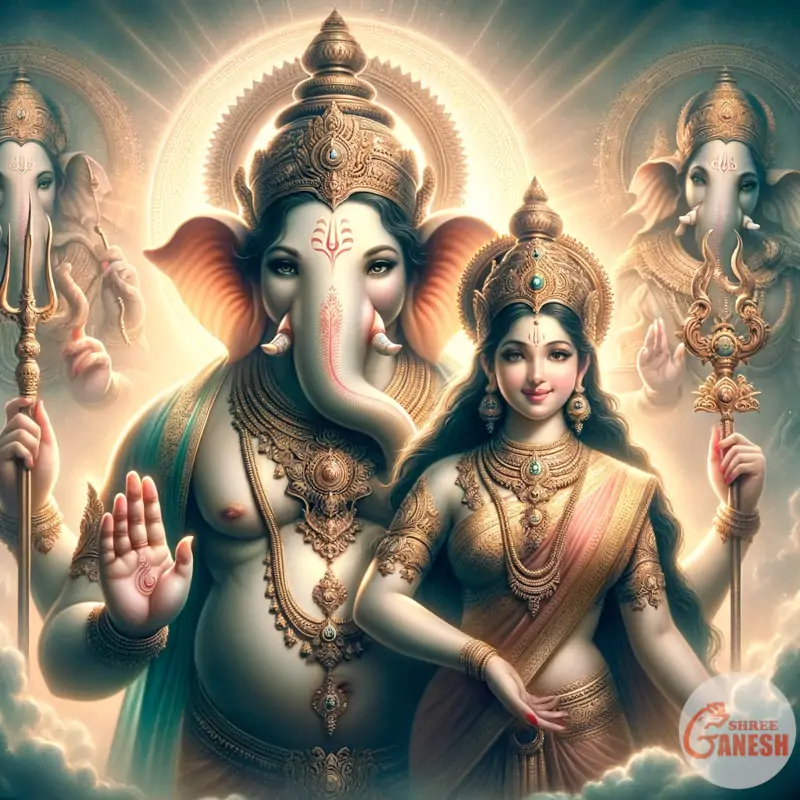
The Devotion to Santoshi Mata
Santoshi Mata’s divine presence has touched the hearts of countless devotees, especially women, who turn to her with fervent devotion. Her significance lies in her ability to fulfill desires and bring about contentment in the lives of her followers. Women, in particular, hold a special place in their hearts for Santoshi Mata, as they believe that she can grant them the happiness and satisfaction they seek.
The devotees of Santoshi Mata engage in rituals and prayers to seek her blessings. Fridays, in particular, are considered auspicious for worshiping her, and her devotees gather in temples and homes to offer their prayers and express their devotion. They light lamps, offer fruits, and perform aarti, a ceremonial ritual of waving a lit lamp in front of the deity, accompanied by chants and hymns.
One of the distinctive aspects of Santoshi Mata’s worship is the offering of ‘vrat’ or fasting. Devotees observe a strict fast on Fridays to demonstrate their devotion and seek the goddess’s favor. The fast typically involves abstaining from food and water until the evening, when they break their fast with a special meal, often consisting of sweets, like ‘halwa’ made of wheat and sugar, which is considered a favorite of the goddess.
The Legend of Santoshi Mata’s Fasting
A captivating legend associated with Santoshi Mata’s fasting revolves around the steadfast devotion of a washerwoman named Dhanya. Dhanya was a devout follower of Santoshi Mata and believed in the goddess’s power to fulfill all desires.
One day, Dhanya’s husband, Shankar, mocked her faith and tried to dissuade her from observing the Friday fast dedicated to Santoshi Mata. He claimed that fasting was a futile practice and that it would bring no benefit to their lives. Undeterred by her husband’s skepticism, Dhanya continued her weekly vrat with unwavering devotion.
As the weeks passed, Dhanya’s household faced increasing hardships, and Shankar’s business began to decline. Troubled by their misfortunes, Shankar eventually decided to put his wife’s faith to the test. He disguised himself as a saintly figure and approached Dhanya, pretending to be a knowledgeable sage.
The disguised Shankar questioned Dhanya’s dedication to Santoshi Mata and mocked her fasting. Dhanya, resolute in her faith, defended her devotion and reaffirmed her belief in the goddess’s power to bring happiness and fulfillment.
Unveiling his true identity, Shankar was deeply moved by his wife’s unwavering faith and devotion. He realized the strength of her belief and the significance of Santoshi Mata’s blessings. Overwhelmed with remorse for his earlier doubts, Shankar sought forgiveness and joined Dhanya in her devotion to Santoshi Mata.
Impressed by their devotion and sincerity, Santoshi Mata blessed Dhanya and Shankar with prosperity and happiness. Their lives were transformed, and they lived joyously ever after, reaffirming the power of faith and devotion to the goddess.
The Symbolism of Santoshi Mata
Santoshi Mata’s significance extends beyond the fulfillment of material desires; she represents deeper spiritual values and virtues. Her portrayal on a lotus signifies purity and the existence of goodness and contentment in a world that often succumbs to selfishness and negativity.
Her four hands, bearing symbols of protection and sweetness, emphasize her role as a guardian of her devotees’ well-being and as a bestower of life’s joys. The concealed upper hands, reserved for her devotees, highlight her boundless compassion and readiness to offer solace to those who seek her refuge.
Santoshi Mata is not just a deity but a divine embodiment of love, happiness, and contentment. Her worship serves as a reminder of the importance of cultivating inner peace and spreading joy in a world filled with challenges and distractions.
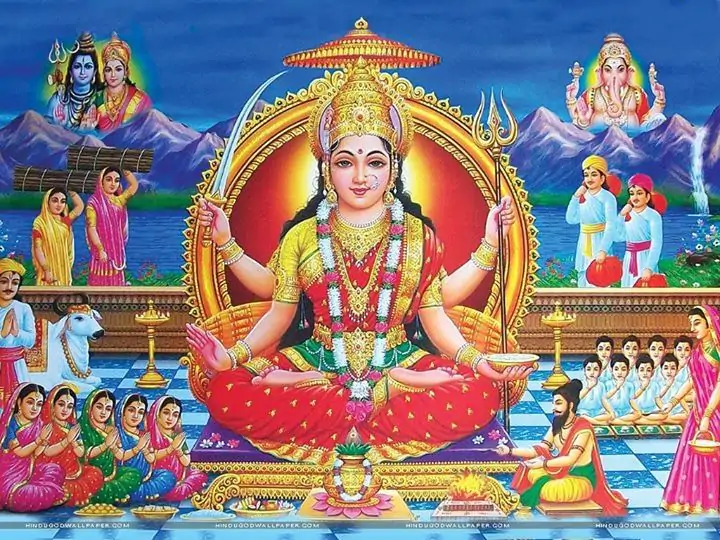
The Universal Appeal of Santoshi Mata
The devotion to Santoshi Mata transcends boundaries and has found followers not only in India but across the world. Her universal appeal lies in her promise of satisfaction and happiness, which resonates with people from diverse backgrounds and cultures.
Santoshi Mata’s compassionate nature and her role as a benevolent goddess make her accessible to anyone seeking solace and fulfillment. Her devotees, irrespective of their age, gender, or social status, find comfort and hope in her divine presence.
In temples dedicated to Santoshi Mata, devotees from various walks of life come together to offer their prayers and seek her blessings. They share stories of their experiences and the miracles they attribute to her grace. These tales of transformation and the fulfillment of desires reinforce the belief in Santoshi Mata’s divine power.
Conclusion
The legend of Santoshi Mata, the spiritual daughter of Lord Ganesha, is a testament to the enduring power of faith, devotion, and the quest for happiness and contentment. Her story reminds us that amidst the challenges of life, there exists a source of unwavering love and protection, ready to grant our heartfelt desires.
Santoshi Mata’s depiction as a goddess of purity, armed with symbols of protection and sweetness, resonates deeply with her devotees. Her concealed upper hands, a symbol of hidden blessings, emphasize her boundless compassion and readiness to offer solace.
Devotees, particularly women, turn to Santoshi Mata with unwavering faith, seeking her blessings and the fulfillment of their wishes.
Santoshi Mata’s universal appeal transcends borders and cultures, welcoming people of all backgrounds to seek her solace and embrace the promise of satisfaction and happiness she embodies.
In a world often filled with challenges and uncertainties, the story of Santoshi Mata serves as a beacon of hope, reminding us of the enduring significance of faith and the boundless blessings that await those who turn to her with love and devotion.


